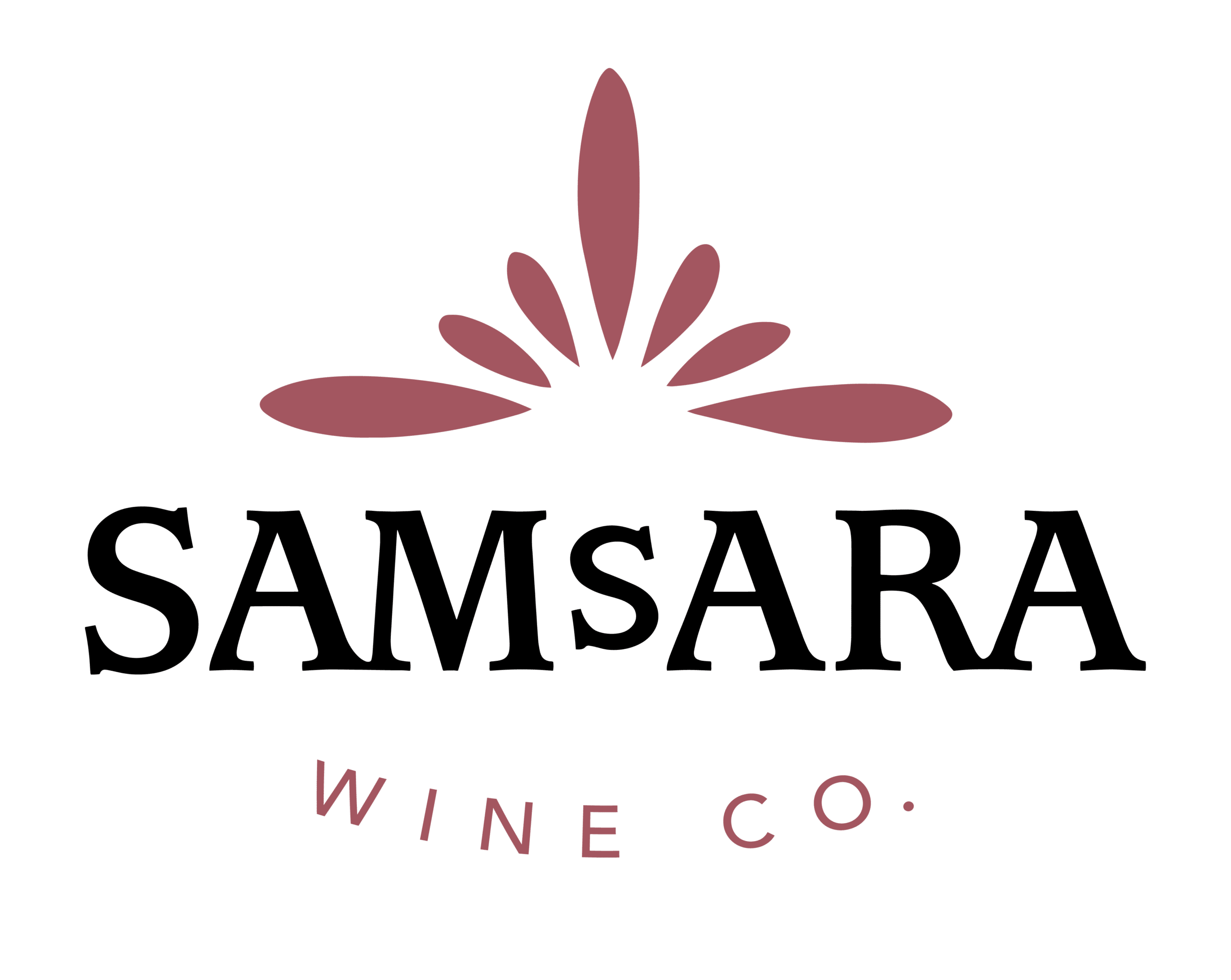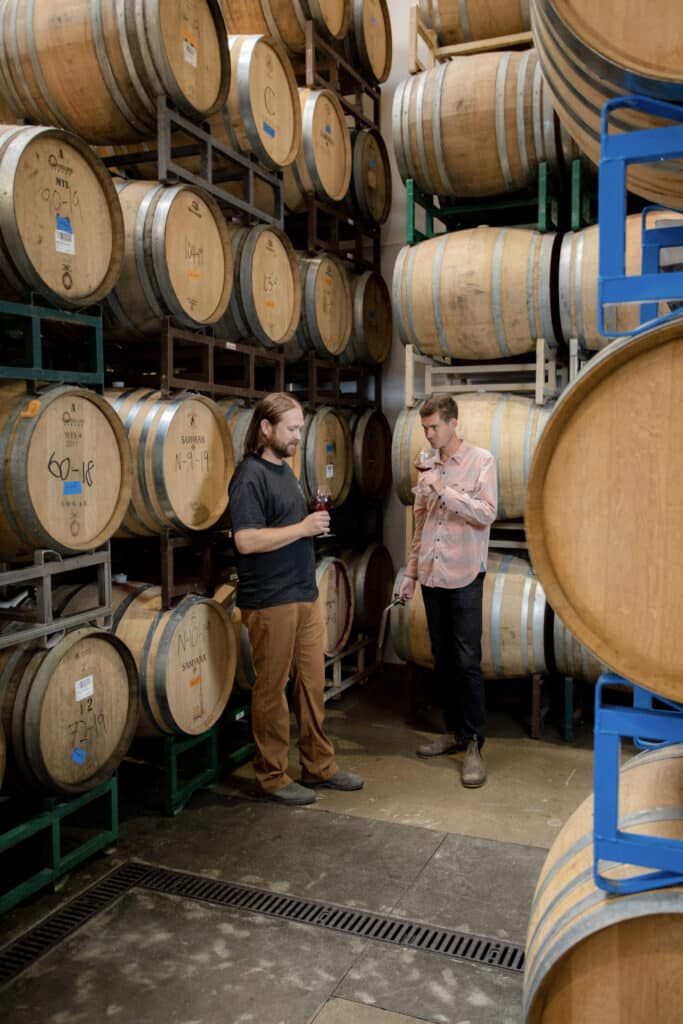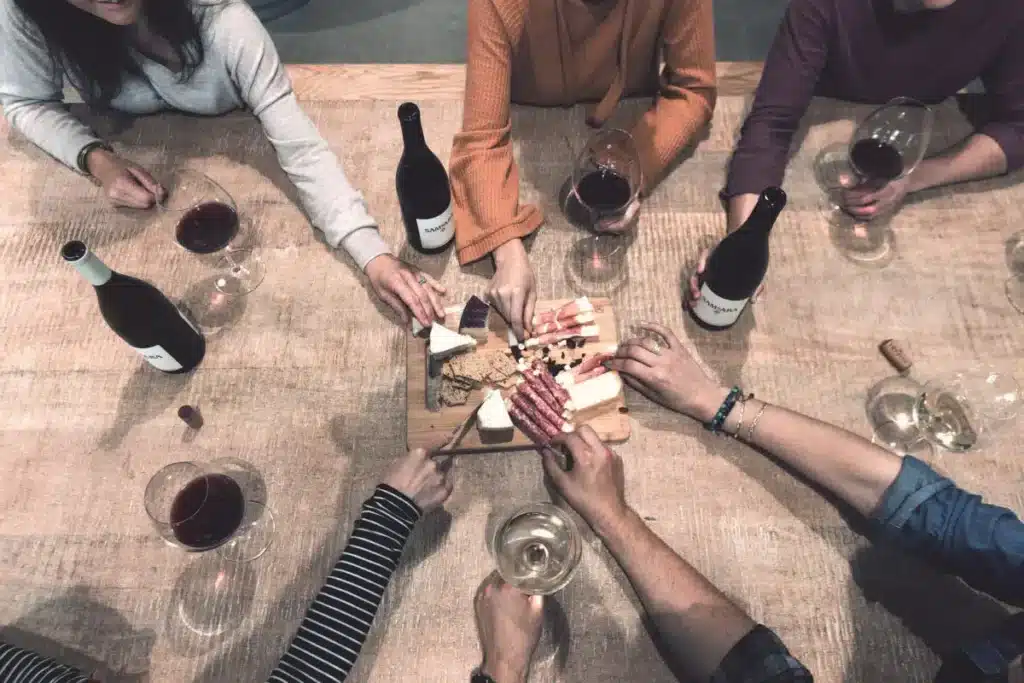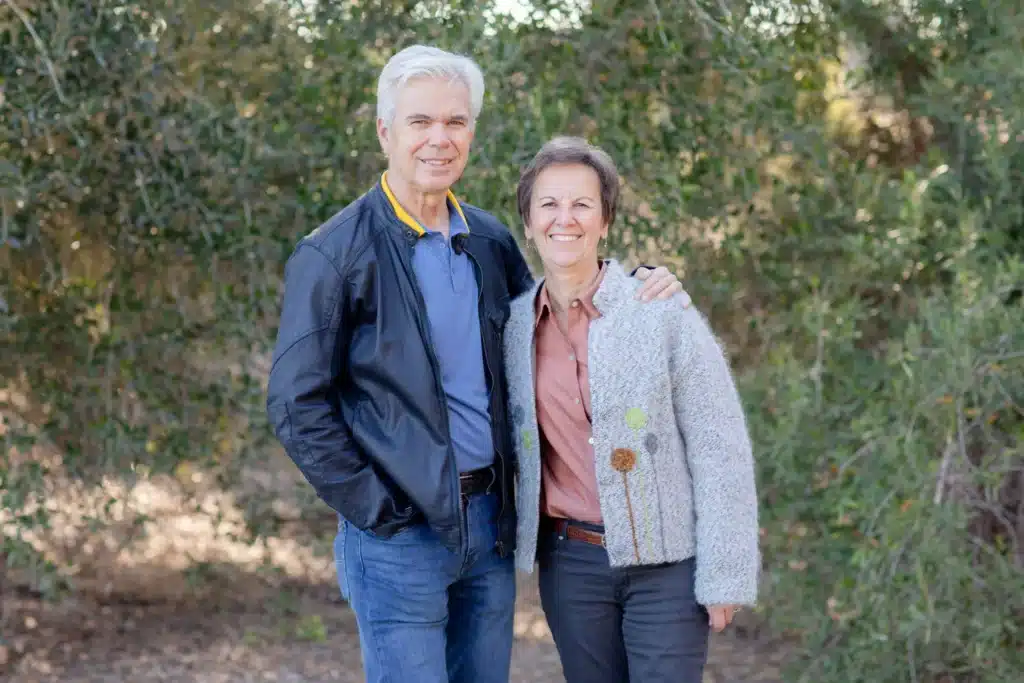No products in the cart.
Community Focus: Michael Larner
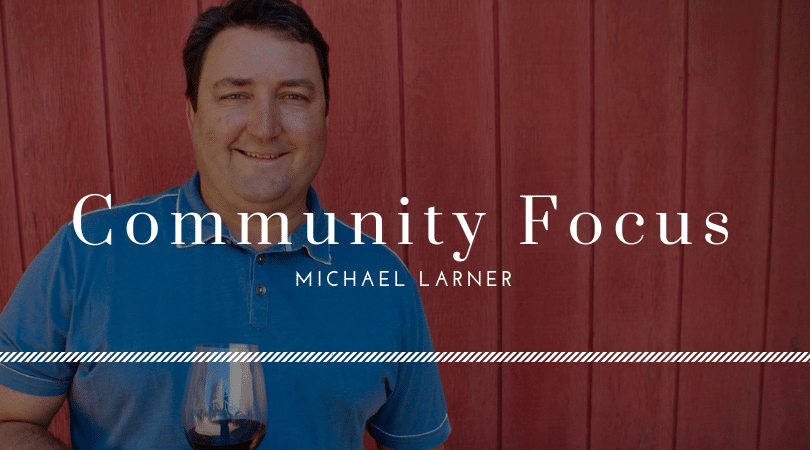
This month we’re telling the story of SAMsARA’s Grenache wine made from grapes grown at Larner Vineyard in Ballard Canyon. To give you a better idea of where our Grenache comes from SAMsARA Winemaker, Matt Brady, sat down with Michael Larner, General Manager at the family-run Larner Vineyard, to talk a little shop.
Good morning, Michael. Thank you for taking the time to speak with me about your vineyard and about what makes Grenache grown at Larner so special.
Good morning, Matt! It’s always a pleasure to see you and to discuss our mutual passion for Santa Barbara County wines and Grenache in particular!
What’s the total acreage of Larner Ranch and Vineyard?
Our total ranch is 130 acres. In 1999, we planted grapevines over 34 of those acres.
Tell us a little bit about the soil composition in the vineyard and how that translates to wines made from the grapes grown here.
The vineyard is broken into three different soil types, and the soil types are based on the parent material. The upper elevation blocks originate from something called the Paso Robles Conglomerate, which is very sandy with some random big chunks of stone in there. There are some big boulders, but the main matrix is sand. The sand layer is called marina sand, which is a very young soil that’s a very high percentage of sand and lower percentages of fine stuff like silt and clay.
The unique combination of soil elements creates a very interesting matrix, because you do not have a lot of water retention and the water moves through quickly. We don’t have any risk of water logging, which is great, and we’ve also found that with this type of soil, our vines are stressed out constantly. It sounds a bit odd, but we actually WANT the vines to have a significant amount of stress so they put all their energy in fruit potential rather than vegetative growth.
In other vineyards, where you have higher clay or higher fine soil, and more available water, you’re fighting against fertility, where with our soils, we’re actually constantly trying to keep the vines happy.
For example, when I water one of our blocks for four hours and another for eight hours, in the four hour block the water is going to get to the feeder roots and satisfy the growth and the eight hour block will get water to the feeder roots and also down to some of the tap roots. That’s how we manage our irrigation, as how we want to maximize where we are phenologically. If we’re worried about berry growth, we do all short waterings. If we’re not worried about berry growth, we’ll do deeper ones.
Another benefit of this kind of soil is there’s no delay in the water getting to the plant, which is a big thing. If we have clay soil, we’re putting water in, it’s going to take a while for that water to get to the plant. And so with the sandier soils, you have a much more immediate uptake. The benefit is we can change irrigation sets to match what’s going on in the vineyard and get the most effective watering. It’s been a lot of fun, figuring out how each block works.
The middle swath of the vineyard is still marina sand, but we have some of the erosion of the hillside that has fallen into that marina sand, adding some fine particles, like silt. So, the soil matrix is technically classified as loam soil.
Okay. Tell us about loam!
And so loam is sand with about 30 percent fine material in it. And loam acts a little bit more like a clay would, it holds a little bit more water, and it feels more like finer particle. On those blocks, we’ve actually changed some of the root stocks and some of the actual irrigation sets to match that differently.
Then, at the lowest elevation, we have a higher percentage of that loam, to the point where it’s almost like a clay and that’s actually very different than that beach sand at the top of the hill.
So really, the soils that we have are coming from that marina sand, whether it has pure sand or it has silt and clay intermixed, depends on the elevation.
And describe for us where the tract of SAMsARA’s Grenache is. . .
The SAMsARA Grenache is in a place where you’re converting from cobbles and sand into some of that loamy type of character.
Well, you can definitely tell a difference in the canopy this year, and the vigor. If there does end up being a lot of fruit out there, we’ll have the canopy to get it right.
Yeah. The biggest question I have at this point is “Are we going to get some heat this year?” I just looked at the weather forecast for next week and it’s going to be in the hundreds. So I guess we’ll see.
Well, it’d be the right time to get some heat, so that would be good. Let’s shift gears a bit and talk about food. What’s your go to food pairing for Grenache?
Typically, I always recommend a light meat like grilled chicken with a rosemary rub, perhaps a pork chop, or duck breast. The beautiful thing about Grenache is it has a velvet character. Essentially, it has a softness to it, and that softness allows you to pair with the lighter meats which a lot of reds tend of overpower.
Grenache doesn’t have a huge tannin structure that you would expect when you’re having a red meat, but it has a nice, elegant balance with ample acidity, so that you can pair with a lot of different things.
Any thoughts on what make Ballard Canyon so special?
I think the crux of it comes down to the confluence of “not too cool, not too hot”.
We have the influence of the ocean, like Sta. Rita Hills have. We have the late fog burning off so we see the sun around 9:30, 10:00. We get good photosynthesis, but we’re also getting those coastal breezes coming in off the Pacific by 12:30, 1:00pm.
We have this really interesting good heat index, yet it doesn’t bake. As you well know, Syrah is grown in Sta. Rita Hills and it’s grown in Happy Canyon, but Ballard seems to have this perfect confluence of both, where you get your classic dark tones that you would get in a cooler climate, compared to like on the east side of the valley, where you get much more of the red fruit components. So I think what’s really special about Ballard, as I see this with Syrah, Grenache, and Mouvedre, is you have that full ripeness of the varietal character. You’ll get some blue fruits, a little bit of vegetal tones in a positive way, which is pepper spices, but you’ve got fruits to balance all that.
Tell me a bit about the Larner Fest Event that you hold from time to time and what that means for you.
The Larner Fest is an event where we invited all of the producers who sell grapes to come to Larner Vineyard for a party to show off the wines they make from our fruit. It is an awesome event because it’s not just wine tasting, but it’s the camaraderie of getting together to celebrate winemaking and showcasing what all of the winemakers had accomplished in a mutual, laid-back forum. It feels like family!
I know we’re growing grapes and we have a business relationship, but we really feel like you guys are like part of our extended family and that event, in particular was a great way to feel the family vibe.
The family feeling is mutual, for sure! Michael, thank you so much for taking the time to talk about your vineyard with our readers. I know they’ll enjoy the read!
